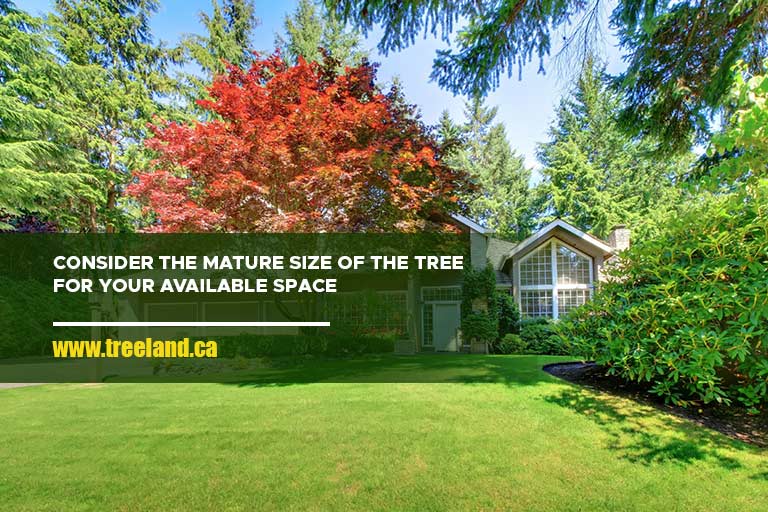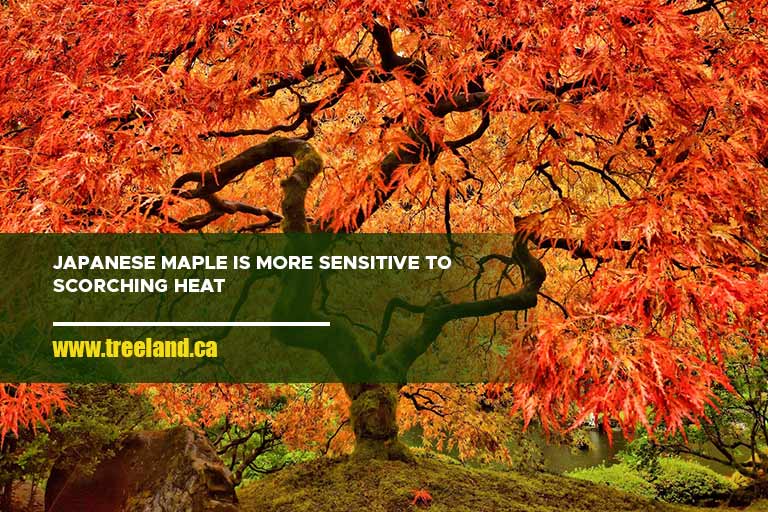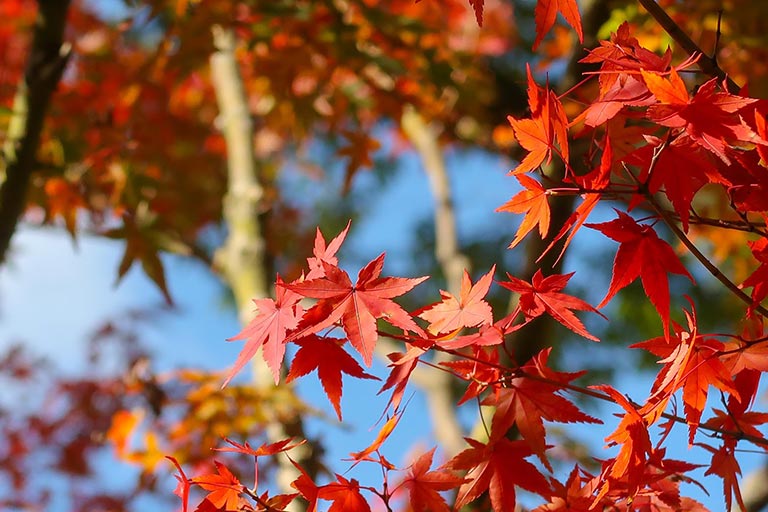Maple trees are a beloved choice for homeowners seeking to enhance their landscapes with vibrant foliage and ample shade. These trees, known for their diverse species and striking seasonal colours, can add both beauty and function to any outdoor space.
Urban maple trees in turfed areas show similar form and structure to their original design intent, but Norway maples in brick walkways show lower canopy densities, higher twig die-back, and smaller canopy widths compared to turfed areas (Schwets, T., & Brown, R. 2000).
We’ll walk you through key considerations to help you choose the perfect maple tree for your landscape, ensuring it thrives in your environment.
Climate and Growing Conditions
Choosing the right maple tree for your landscape starts with understanding your local climate and growing conditions. Maple species vary significantly in their ability to thrive in different environments, so it’s important to select a tree that aligns with your region’s temperature and seasonal changes.
For colder climates, species like the Sugar Maple and Red Maple are excellent choices, as they are hardy and can withstand harsh winters. In contrast, Japanese Maples are better suited for milder climates, as they are more sensitive to frost.
Beyond temperature, you’ll need to consider rainfall and humidity levels. Some maples, such as the Silver Maple, can tolerate wetter conditions, making them ideal for areas with frequent rainfall. On the other hand, more drought-resistant species like the Amur Maple are better for regions with drier climates.
Growth Rate and Mature Size

When selecting a maple tree, understanding its growth rate and mature size is crucial to achieving a balanced landscape. Different species exhibit varying growth patterns, which can significantly influence the overall design and functionality of your outdoor space.
Growth Rate
Some maple trees grow rapidly, reaching maturity in just a few years. For instance, the Silver Maple can add up to 1 meter in height annually, making it an excellent choice for quick shade. However, faster-growing trees may require more frequent maintenance to manage their size and shape.
Conversely, slower-growing species like the Japanese Maple typically take longer to reach their full height, which can be advantageous if you prefer a more gradual landscape transformation. These trees often require less pruning and care during their initial years.
Mature Size
The mature size of a maple tree can vary significantly, so it’s essential to consider how much space you have available. Species such as the Red Maple can grow up to 12-18 meters tall with a similar spread, making them suitable for larger lawns.
In contrast, the Dwarf Japanese Maple typically reaches only 1.2-3 meters, perfect for smaller gardens or as focal points in landscaping.
Soil and Sunlight Requirements
When choosing a maple tree, it’s essential to understand its soil and sunlight needs to ensure optimal growth and health. Whether you’re browsing trees for sale in Stouffville or at a local nursery, different species of maple have varying tolerances and preferences that can impact their performance in your landscape.
Soil Types
Maple trees generally prefer well-draining soils, but the specific soil type can differ among species:
- Sugar Maples thrive in rich, loamy soils that retain moisture but still drain well. They can struggle in overly sandy or compacted soils.
- Norway Maples are more adaptable and can tolerate a range of soil types, including clay and urban soils, making them suitable for challenging environments.
- Japanese Maples prefer slightly acidic, well-draining soil enriched with organic matter to support their delicate root systems.
Before planting, conducting a soil test can help determine the pH and nutrient levels, allowing you to amend the soil as necessary to meet the specific needs of the chosen maple tree.
Sunlight Exposure

Although most maple trees prefer full sun to partial shade, their growth and general health can be impacted by the quantity of sunshine they receive:
- Red Maples and Silver Maples thrive in full sun, requiring at least 6 hours of direct sunlight per day to reach their full potential.
- Japanese Maples, on the other hand, can benefit from some afternoon shade, especially in warmer climates, to protect their leaves from scorching.
Seasonal Appeal: Foliage Colours and Changes
Maple trees are renowned for their stunning seasonal beauty, particularly during the fall when their leaves transform into a vibrant display of colours. This characteristic makes them a popular choice for landscapes that aim to capture nature’s changing palette throughout the year.
Fall Foliage
One of the most celebrated aspects of maple trees is their spectacular autumn display. As temperatures cool and daylight decreases, the chlorophyll in the leaves breaks down, revealing the underlying pigments. Different species of maple offer a range of hues, making them essential for creating a captivating fall landscape:
- Sugar Maples produce brilliant shades of gold, orange, and deep red. Their striking fall colours can last several weeks, providing a beautiful backdrop as the season progresses.
- Red Maples, true to their name, offer a vibrant display of scarlet and crimson leaves. They often showcase their colours early in the fall, making them a popular choice for those eager to enjoy autumn foliage.
- Norway Maples typically turn a bright yellow, adding a warm glow to the landscape. While their fall colours may not be as vivid as other species, they still contribute significantly to the seasonal appeal.
Seasonal Changes
The beauty of maple trees is not limited to fall. Each season brings its own unique charm:
- Spring: As the leaves unfurl, many maple species exhibit fresh green foliage, which can range from light to dark shades. Some, like the Japanese Maple, display delicate pink or purple hues in their new growth.
- Summer: During the summer months, the lush green canopies provide ample shade and a vibrant backdrop for other garden plants. Certain species also produce attractive flowers and samaras, adding to the visual interest.
- Winter: Even in winter, the skeletal structure of maple trees can be striking. Their branching patterns become more visible, creating beautiful silhouettes against a snowy backdrop.
Elevate Your Landscape with Maple Trees!
Choosing the right maple tree can transform your landscape into a stunning display of seasonal beauty. With careful consideration, you can create an inviting and vibrant outdoor space. If you’re ready to enhance your garden with magnificent maple trees, look no further!
Contact Caledon Treeland at (905) 880-1828 for expert guidance and to discover a variety of maple trees for sale in Toronto. Let’s bring your vision to life with the perfect maple tree for your landscape!

